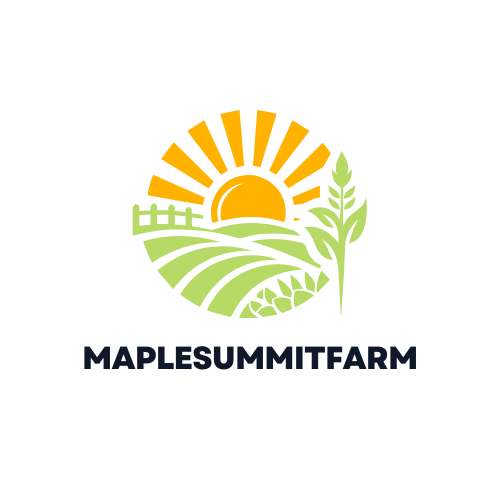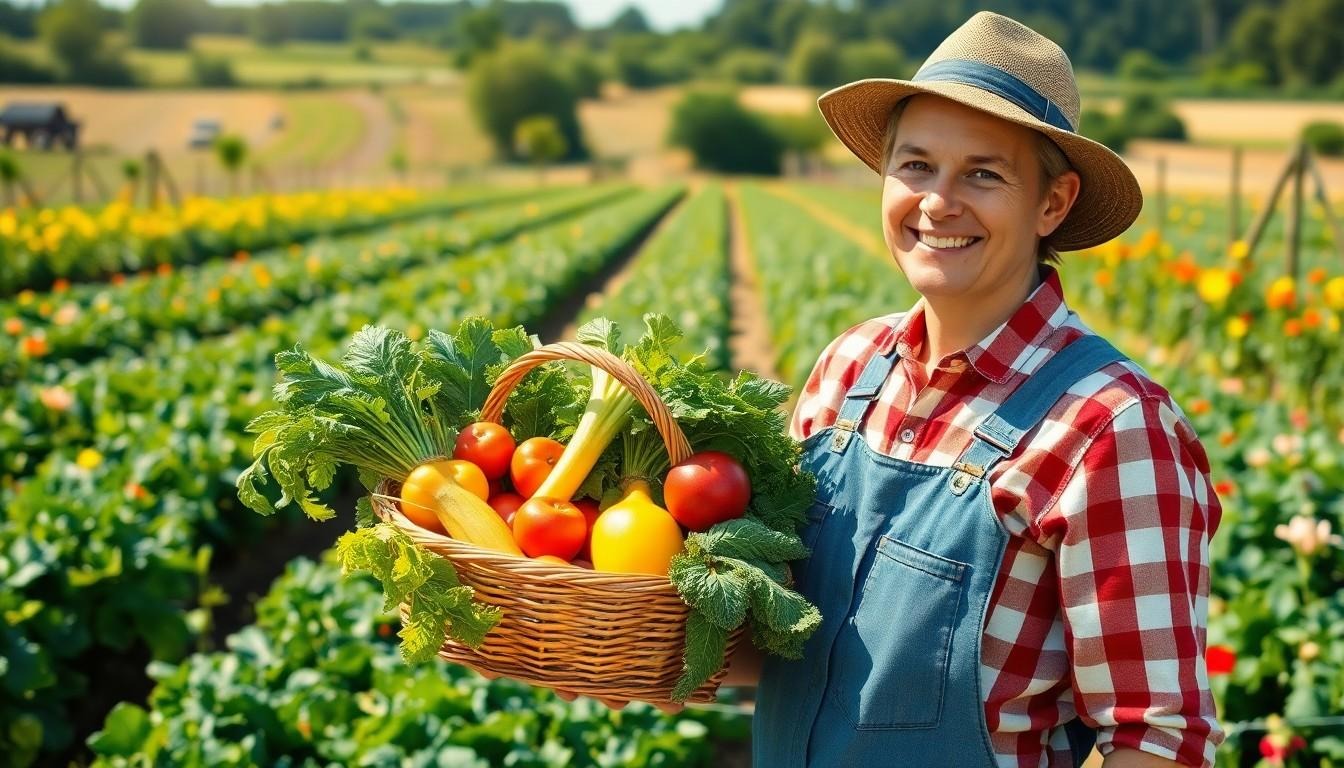Imagine a world where your vegetables are as green as your conscience. Sustainable farming isn’t just a trend; it’s a lifestyle that promises fresh produce, healthier soil, and a happier planet. Whether you’re dreaming of a backyard garden or a full-blown farm, starting your sustainable journey can be as thrilling as finding a hidden stash of chocolate.
How to Start Sustainable Farming
Sustainable farming encompasses methods that maintain the health of the environment and meet the food needs of current and future generations. This approach balances economic viability with environmental health and social equity.
Definition and Importance
Sustainable farming refers to agricultural practices that do not deplete resources or cause harm to ecosystems. This farming method prioritizes long-term soil health, water quality, and biodiversity. By minimizing the use of synthetic chemicals and promoting crop diversity, it fosters resilience against climate change. Importance lies in its capacity to support local economies, reduce carbon footprints, and enhance food security. Sustainable farming contributes to the preservation of natural habitats, ensuring that ecosystems thrive alongside agricultural practices.
Key Principles of Sustainability
Key principles of sustainable farming include conservation of resources, ecological balance, and community engagement. Conservation methods focus on water management and soil preservation to ensure productivity. Ecological balance involves maintaining biodiversity through crop rotation and companion planting. Community engagement fosters education about sustainable practices while supporting local markets and economies. Adopting these principles strengthens the farm’s resilience and enhances the overall health of the community and environment.
Preparing for Sustainable Farming

Successful sustainable farming begins with thorough preparation. Understanding land characteristics and available resources lays a strong foundation.
Assessing Your Land and Resources
Assessing land involves analyzing soil quality, drainage, and sunlight exposure. Conducting soil tests provides insights into nutrient levels and pH balance. Evaluating water availability ensures sufficient irrigation for crops. Mapping out land features helps identify areas suitable for different types of farming. Knowledge of local wildlife and ecosystem conditions guides conservation decisions. Recognizing existing resources, such as tools and equipment, allows farmers to make the best use of what they have. All these factors contribute to a comprehensive plan for effective and sustainable farming.
Choosing the Right Crops and Livestock
Selecting appropriate crops and livestock aligns with sustainable practices and land capability. Crop selection should consider climate, soil type, and local market demand. Favoring native species promotes biodiversity and enhances resilience against pests and diseases. Integrating complementary crops can improve yields and soil health. When choosing livestock, assessing space, feed availability, and care requirements is crucial. Prioritizing animals suited for the local environment minimizes resource strain and maintenance challenges. Remarkably, this combination of thoughtful choices supports a sustainable farming ecosystem.
Implementing Sustainable Practices
Sustainable farming practices foster a thriving ecosystem while maximizing food production. Focusing on diverse approaches enhances overall farm resilience and productivity.
Crop Rotation and Diversity
Crop rotation enhances soil health by preventing nutrient depletion. Implementing various types of crops reduces pest pressures and increases biodiversity on the farm. Selecting crops that thrive in different seasons extends productive periods. For instance, alternating between legumes and cereals boosts nitrogen levels, improving soil fertility. Integrating native and adaptive varieties fosters natural resistance to pests, enhancing yields. Emphasizing rotation schedules tailored to local climates and soil types supports a longer-term ecological balance.
Organic Fertilizers and Pest Control
Organic fertilizers contribute to soil vitality without harmful chemicals. Utilizing compost, manure, and cover crops enriches the soil’s nutrient profile. These materials promote healthy microbial activity, crucial for plant growth. Pest control methods such as integrated pest management minimize chemical interventions. Encouraging beneficial insects provides natural pest deterrents, reducing crop damage. Opting for organic practices cultivates a safer agricultural environment and improves produce quality for consumers. Prioritizing sustainable inputs ultimately leads to healthier ecosystems and thriving farms.
Building a Sustainable Farming Community
Building a sustainable farming community requires collaboration, knowledge sharing, and a commitment to common goals. Leveraging the strengths of each member leads to stronger, more resilient agricultural practices.
Networking with Other Farmers
Connecting with other farmers fosters an exchange of ideas and experiences. Local farmer groups and cooperatives provide support and resources for sustainable practices. Attending workshops and agricultural fairs enhances skills while building relationships. Participating in online forums allows for year-round discussions about challenges and solutions. Farmers can share surplus produce, strengthen local markets, and develop mutual support systems.
Accessing Resources and Education
Accessing educational resources accelerates sustainable farming practices. Local extension services offer workshops and expert advice tailored to community needs. Utilizing online courses and webinars promotes continuous learning about best practices. Community colleges and agricultural schools provide hands-on training opportunities for aspiring farmers. Collaborating with agricultural organizations often leads to grants and funding for innovative projects. Farmers benefit from staying informed about sustainable technologies and innovations through various platforms.
Monitoring and Adapting Your Practices
Monitoring and adapting practices remain essential for successful sustainable farming. Regular assessments and adjustments ensure that farming techniques align with environmental needs.
Evaluating Farming Techniques
Evaluating farming techniques involves examining soil health, crop productivity, and pest management efficiency. Regularly analyzing these factors informs farmers about necessary adjustments. For instance, measuring yield from diverse crop rotations reveals insights into their effectiveness. Soil tests offer vital information regarding nutrient levels and pH balance, helping farmers optimize organic amendments. Observing pest populations ensures timely interventions with integrated management strategies, reducing reliance on chemicals. Continuous evaluation fosters resilience against environmental changes and maintains sustainable practices.
Staying Informed on Sustainable Methods
Staying informed on sustainable methods is critical in a changing agricultural landscape. Engaging with local extension services keeps farmers updated on best practices and innovative techniques. Attending workshops and conferences not only provides valuable insights but also fosters a sense of community. Subscribing to agricultural journals and online resources keeps sustainable strategies at the forefront. Utilizing social media platforms connects farmers with experts and peers, facilitating knowledge exchange. By remaining engaged and informed, farmers enhance their ability to adapt practices effectively and sustain their farms.

